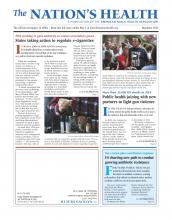Americans with HIV are exercising but not at the recommended levels to lower their risk of having multiple chronic diseases, according to a recent study.
However, the road to reducing that risk can begin at home, according to findings published in the March/April 2015 issue of the Journal of the Association of Nurses in AIDS Care.
The study looked at the home exercise habits of 102 women and men — mostly black — with HIV among three age groups: age 35 or younger, ages 36-50 and age 51 or older. Participants filled out an exercise diary over seven days, filling out whether they exercised at all and, if so, for how long and the intensity level.
Cardiovascular and mental health have become more important for people with HIV as antiretroviral medication has helped prolong their lives, said Allison Webel, PhD, RN, a study author and assistant professor of nursing at Case Western Reserve University.
“This focus on health promotion illustrates a shift from a disease model to living well with HIV,” Webel told The Nation’s Health. “We’re at a point in history that we can do that now. These new classes of medications have fewer side effects that we’re encouraging people to live their lives as if they would with any other chronic disease.”
Overall women reported exercising 2.4 hours per week while men exercised 3.5 hours per week, the study found.
Women and men exercised three times a week on average, and the most common type of exercise was walking, the study said. Out of the three age groups, adults ages 36-50 exercised the most on a regular basis.
Women were found to engage in more diverse types of exercise than men, the study said. For example, 46 percent of women recorded stretching, compared to 30 percent of men, and 23 percent of women reported weight lifting, compared to 13 percent of men.
Webel said one of the surprising things in the results was the range of types of physical activity the study participants engaged in, such as calisthenics and climbing stairs.
“These are all activities that don’t require a gym,” Webel said. “These are exercises people can do at home. To us it says home-based physical activity is important. It’s not just about going to a gym or working out with a trainer. It’s about how you change the habits of people in their home environment to support healthy activity.”
Webel suggests public health practitioners prescribe exercise regimens for people with HIV and counsel them about becoming active and improving physical activity.
“Detailing how much exercise they should get, explaining the rationale with patients is something that’s been shown to work well in other subpopulations of people,” Webel said. “The downside of the prescription is that it is an inherently individual strategy and social support-based strategies can also be very important in initiating physical activity and maintaining it.”
For more information, visit http://www.nursesinaidscarejournal.org/article/S1055-3290%2814%2900137-X/abstract.
- Copyright The Nation’s Health, American Public Health Association









